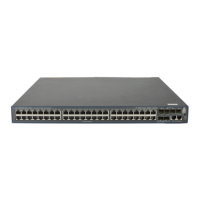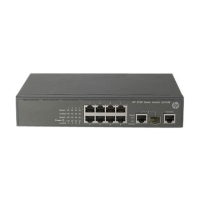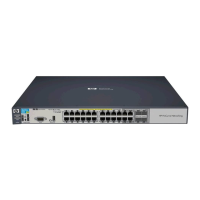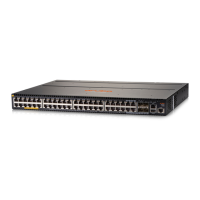298
IPv6 multicast routing and forwarding
configuration commands (available only on the
HP 3600 v2 EI)
The term "router" in this document refers to both routers and Layer 3 switches.
The term "interface" in the IPv6 multicast routing and forwarding features collectively refers to Layer 3
interfaces, including VLAN interfaces and Layer 3 Ethernet interfaces. You can set an Ethernet port as a
Layer 3 interface by using the port link-mode route command (see Layer 2—LAN Switching
Configuration Guide).
display multicast ipv6 boundary
Syntax
display multicast ipv6 boundary { group [ ipv6-group-address [ prefix-length ] ] | scope [ scope-id ] }
[ interface interface-type interface-number ] [ | { begin | exclude | include } regular-expression ]
View
Any view
Default level
1: Monitor level
Parameters
group: Displays the IPv6 multicast boundary information for the specified group.
ipv6-group-address: Specifies an IPv6 multicast group address, in the range of FFxy::/16, where x and
y represent any hexadecimal number from 0 through F.
prefix-length: Specifies the prefix length of an IPv6 multicast group address, in the range of 8 to 128. The
default is 128.
scope: Displays the IPv6 multicast group boundary information in the admin-scope zone.
scope-id: Specifies the ID of an admin-scope zone in the range of 3 to 15, which is identified by the
scope field in the IPv6 multicast group address.
interface-type interface-number: Specifies an interface by its type and number.
|: Filters command output by specifying a regular expression. For more information about regular
expressions, see Fundamentals Configuration Guide.
begin: Displays the first line that matches the specified regular expression and all lines that follow.
exclude: Displays all lines that do not match the specified regular expression.
include: Displays all lines that match the specified regular expression.
regular-expression: Specifies a regular expression, a case-sensitive string of 1 to 256 characters.

